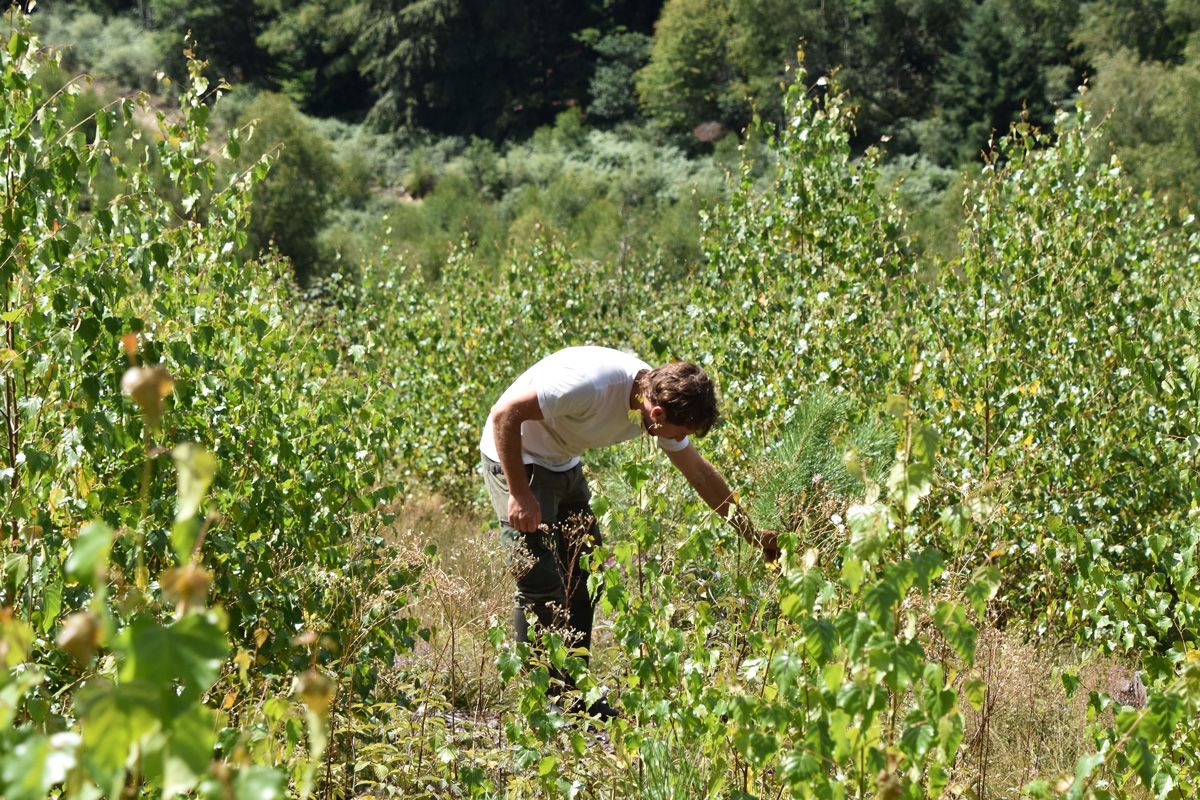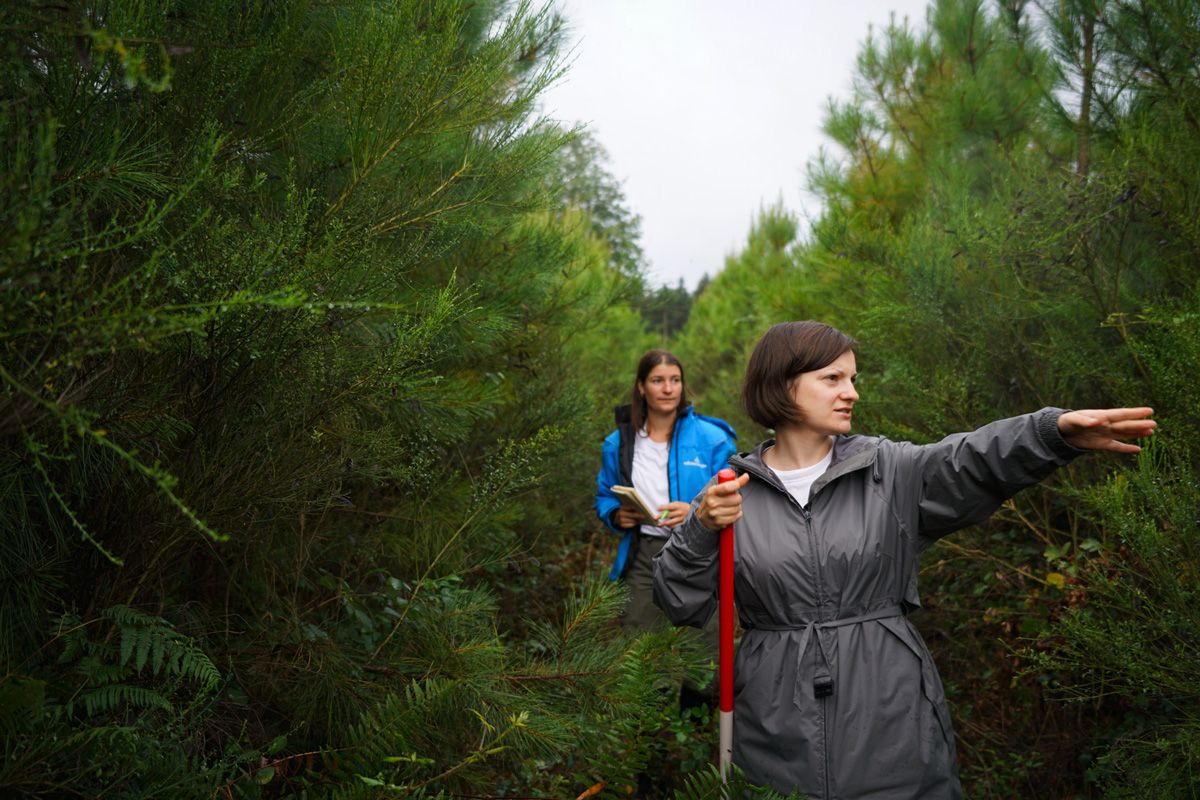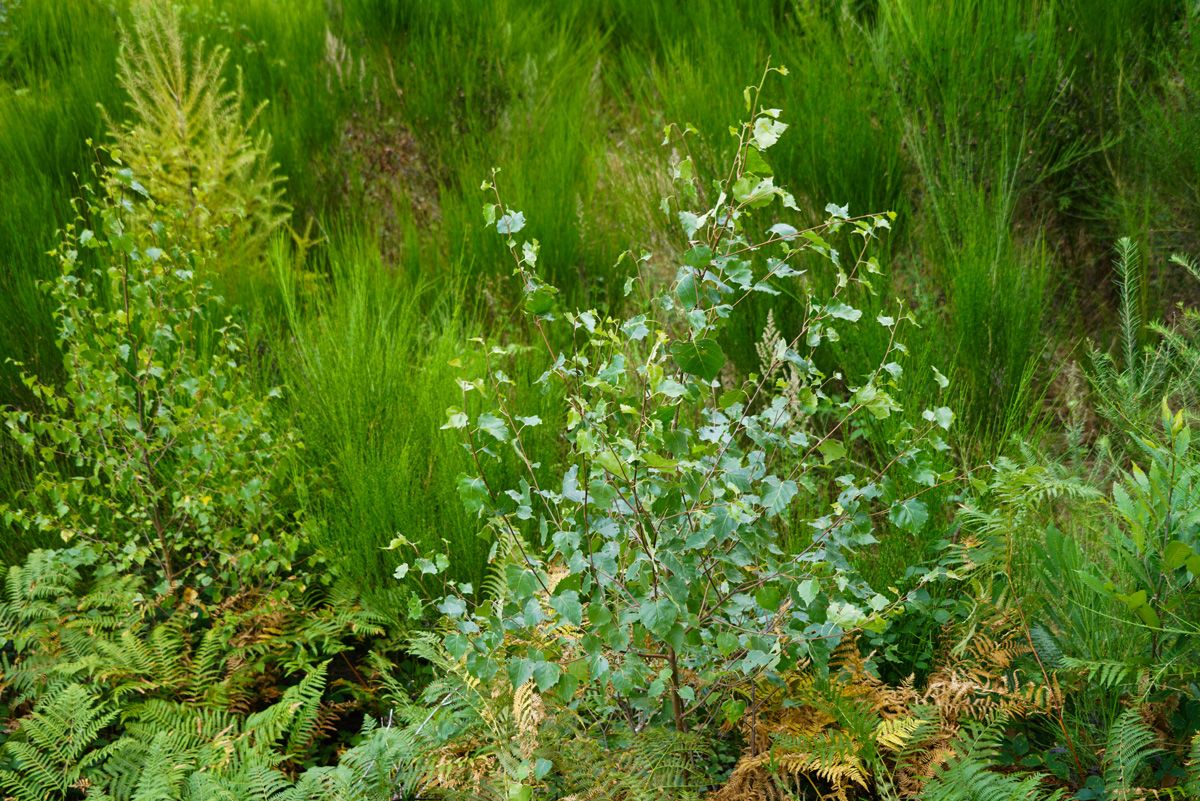The monitoring of forestry projects after they have been implemented is fundamental and a cornerstone of our action. Reforest'Action has a rigorous monitoring process, adapted to geographical zones and project types. In France and Europe, remote monitoring is complemented by a field audit carried out by Reforest'Action project managers at least once during the first five years following project implementation. Analysis of the data generated by this monitoring process is used to formulate management recommendations and apply corrective measures as part of a continuous improvement process. Here are the results of the monitoring campaign carried out between April and November 2023 on a panel of projects located in Europe.

Monitor projects remotely to assess their health
What is the remote project monitoring protocol?
Remote monitoring is based on information transmitted by the project implementers (forest owners or managers) via a digital data collection tool and, where applicable, by telephone. Reforest'Action project managers then analyze the data, which includes tree survival rates, plot health, potential damage, the presence of biodiversity-friendly elements, and actions taken by the plot owner or manager to ensure the success of the project.
This remote monitoring enables us to check the general condition of the projects and the proper development of the stands, to enrich Reforest'Action's knowledge of each project and to prepare for future field visits.
What are the results of remote monitoring in 2023?
Evaluating the survival rate
In 2023, 294 data forms from projects in France and the rest of Europe were received and processed by Reforest'Action as part of the distant monitoring campaign in 2023. These forms submitted by the project implementers reported an average survival rate of 79.84%. This rate measures the number of healthy trees in relation to the total number of trees planted as part of a project. In total, by 2023, 71% of remotely monitored projects across Europe will have a very good survival rate, of 80% or more.
Game and drought, two frequent causes of damage
The most common types of damage to young forests are those inflicted by game, which affected almost half of the projects monitored in Europe in 2023, but also those linked to climate. Drought episodes, characterized by prolonged rainfall deficits and increasingly frequent in a context of global warming, had an impact on 60.2% of projects monitored remotely across Europe in 2023. Despite these frequent biotic and climatic hazards, only 3.74% of projects actually suffer from poor overall health according to the remote surveys, representing a cumulative total of 3,370.66 hectares, or around 4 million plants.
What corrective measures will be put in place for projects that need them?
For projects with less satisfactory survival rates, corrective measures will be implemented in accordance with the contractual commitment of the project implementers. For example, replanting, which consists of renewing planting operations in areas where reforestation has failed, may be carried out to enable these projects to approach a survival rate of 80%.
From Reforest'Action's point of view, these projects will be monitored more closely in the coming year, to verify the improvement in stand health. In the rare case of a project subject to a major hazard, such as a fire or flood, Reforest'Action observes the evolution of the post-hazard ecosystem to decide on the best course of action. This is a long-term, case-by-case process.
In addition, we recommend that, before planting, project implementers use the funding they receive not only to carry out planting operations, but also to properly prepare the plots and protect the young seedlings from the teeth of game.

Audit projects in the field to ensure their success
How does Reforest'Action select the projects audited in the field?
Field monitoring is carried out by Reforest'Action project managers within the region for which they are responsible. Because there are so many projects to monitor (over 1,500 projects have been developed in France and Europe since 2010), field monitoring is prioritized before each annual campaign. The aim of this prioritization is to first target projects for which remote monitoring has revealed potential problems. It also aims to ensure that all projects will be monitored in the field at least once during the five years following a project's operational implementation.
What does involve a project monitoring in the field?
In order to carry out field monitoring, sampling is first carried out within the plot concerned, in order to determine sub-plots that are considered representative of the plot's general condition: some sub-plots are thus established within a dense vegetation zone, others within a zone with a low survival rate, and still others according to the plot's specific topographical conditions (altitude, slope level, rocky or wet environment...). This stratification process, which can be carried out by remote sensing, enables us to set up an operational monitoring system that reflects the reality of the project as objectively as possible.
Within these plots, a manual count is then carried out by the Reforest'Action project manager, who records the number of living and dead trees, the species observed and the potential presence of natural regeneration. Each type of project (forestry or agroforestry projects, urban micro-forestry projects, Assisted Natural Regeneration projects or Low-Carbon label projects) has its own monitoring protocol defined by Reforest'Action.

What are the results of field monitoring in 2023?
In 2023, field audits took place from April to November. For all 204 projects visited by Reforest'Action in Europe during this period, the average recovery rate was 88.43%.
90% of projects validated
Of these 204 projects, 182 (or almost 90% of the projects audited) have been validated by Reforest'Action, i.e. the project manager has assessed that the future of the ecosystem is assured given its evolution. This validation takes into account the project's survival rate, which must be greater than 80% of the total density, including natural regeneration.
Among the validated projects, the one in Hardelot, Pas-de-Calais, was visited by Laetitia Bernard, Reforest'Action's East of France project manager. “This project was carried out between 2017 and 2018 to restore a forest affected by ash chalarosis, a parasitic disease that causes the trees it affects to die back,” explains Laetitia. “During our field audit in 2023, we noted an excellent recovery of the planted trees, close to 90%, despite the regular droughts that have affected the department since 2017. Composed of beech, small-leaf lime and hornbeam, the young forest restored thanks to the project is now enriched by clumps of black alder, naturally regenerated and preserved by the forest manager to further accentuate the diversity of the stand. Hardelot is a fine example of a successful project, validated by Reforest'Action's field monitoring."
10% of projects to be corrected
For the remaining 22 projects, considered as “to be corrected”, Reforest'Action formulated written or oral recommendations to forest owners, proposing corrective actions to be implemented or pursued in order to ensure the health and sustainability of the forest ecosystem.
“This is the case, for example, of the La Tour-de-Sçay project in the Doubs region of France", continues Laetitia Bernard. “The initial work, carried out in 2019, was aimed at reforesting a plot formerly populated by spruce trees affected by the bark beetle, a wood-eating insect. The species initially chosen were Douglas fir, field maple and walnut. But the Douglas fir seedlings didn't take well. They were replaced by cedars in 2020. When we followed up in the field in 2023, the recovery rate of the cedars was very good. On the other hand, we noted the failure of the maple and walnut plantations, despite two attempts at replanting. We therefore decided, in agreement with the forest manager, to support the natural regeneration of beech, fir and oak trees observed on the plot, and to supplement it with new cedar seedlings, which are particularly well adapted to the site. This evolutionary management of the project will optimize the health and stability of the forest ecosystem."
A central observation: the need to adapt forests to climate change
In the field, the same trend was observed as in the distant follow-up with regard to the most frequently observed damage: 44.6% of the projects audited in 2023 were affected by biotic hazards, particularly game, and 32% by climatic damage, mainly linked to drought.
“These field audits confirm the need to adapt tomorrow's forests to climate change, and to rely on species that are already present and more resistant via the Assisted Natural Regeneration method", says Thibaud Poulain, Head of Reforest'Action's Temperate Forests Division. “The diversification of tree species, in particular, is key to increasing the stability and resilience of ecosystems in the face of future hazards. The selection of different tree species in the design of projects is therefore one of the pillars of Reforest'Action's specifications."

Ecocert Environnement certification
In addition to Reforest'Action's remote and field monitoring protocol, a partnership with Ecocert Environnement was set up in 2020 to have our projects verified by an independent third party. Ecocert Environnement is an auditor specializing in the certification and control of environmental projects, and verifies a series of criteria based on a sampling protocol for projects financed by Reforest'Action.
In particular, Ecocert Environnement check the name and location of the forestry project, the year the work was carried out, the species planted or regenerated, the health of the plot, the survival rate observed, as well as the reality of the financing raised by Reforest'Action and compliance with the general terms and conditions of sale.
At each audit visit, Ecocert Environnement's conclusions are backed up by corrective measures that enable us to pursue our continuous improvement approach. In 2023, a panel of 17 projects was audited by Ecocert Environnement, of which 16 were validated and 1 remains to be corrected.
Ecocert Environnement also carries out an administrative review of projects and their management, which includes checking forest owners' commitments, invoices for plant purchases and certificates of origin.

In a context of climate change and increased risk of hazards inherent in natural ecosystems, we make it a priority to monitor the projects we develop. This operational monitoring phase aims to verify the success of projects over the five years following their implementation. An impact measurement process will then be deployed on certain projects from the sixth year onwards, to assess the health and stability of the ecosystem and measure the impacts generated by the project on the climate, biodiversity, the soil-water system and the socio-economic sphere. Measuring all these impacts will enable us to observe the multifunctionality of ecosystems, and check their resistance and renewal in the face of disturbance. This will make it easier to support projects over the long term, by implementing a management approach that is increasingly adapted to their evolution.